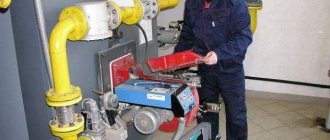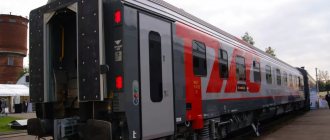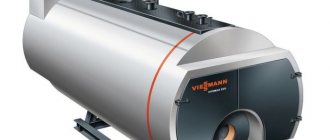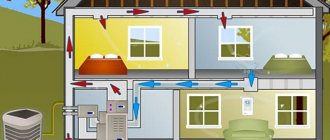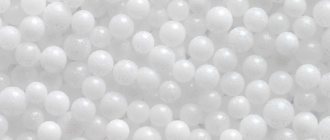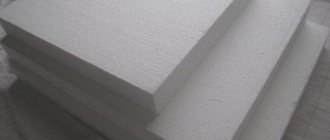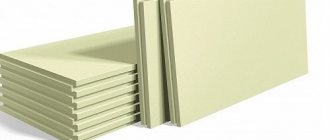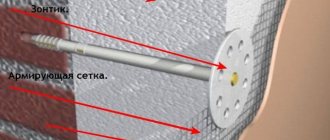Extruded polystyrene foam is a modern thermal insulation material, which literally in recent years has gained strong confidence in itself and is in great demand in construction work.
Externally, this material has a homogeneous structure, which consists of porous cells measuring 0.1-0.2 mm. Making polystyrene foam involves mixing polystyrene granules at high temperatures and pressure and then extruding the component from an extruder.
Insulation of walls inside a building
It is very important that the vapor and air permeability of the walls of the house are at the proper level. The walls must retain heat well and remove excess moisture outside the structure. This is why partitions are best made of wood.
However, the use of dense insulation, which prevents the removal of moisture, leads to the creation of condensation on the surfaces of walls or ceilings. Naturally, it is very uncomfortable to live in such rooms. Moisture leads to the development of mold and mildew, as well as pathogenic bacteria. The furniture will begin to deteriorate, as will the finishing materials.
Extruded polystyrene foam boasts excellent thermal insulation characteristics; it easily allows moisture to pass from the room to the outside. Walls insulated in this way are the best option for creating an optimal microclimate in the room.
Famous brands guarding quality
The association with the word “expanded polystyrene” immediately comes to mind - it’s polystyrene foam. Those companies that were the first to start producing foam plastic are now no less successful in producing modern extrusion insulation. The city of Grodno in the Republic of Belarus is well known in the post-Soviet space for its products, which are in consistently high demand.
This is explained by the following factors:
- High quality of manufactured products.
- Compliance with all environmental standards.
- Affordable product prices.
In order to extrude polystyrene foam on a production scale, only high-quality equipment is needed, which becomes the main proof of the quality of the product. For this reason, along with domestic manufacturers, there is a high level of demand for goods from European companies, which always bear responsibility for their goods.
The number of such companies is growing steadily, which is why the end user receives tangible benefits. Reducing the cost of insulation, a steady increase in its quality and an increase in the range - all this is a consequence of competition in the market of thermal insulation materials.
The two most popular recent manufacturers of expanded polystyrene and polystyrene foam are. The first is one of the most famous brands in Europe and is engaged in the complex production of a wide range of insulation materials. Their production bases allow them to extrude polystyrene foam in accordance with the highest requirements and develop innovative technologies, thereby reducing the cost of their products.
TechnoNIKOL is a domestic giant producing polystyrene foam and other types of insulation materials. The presence of a scientific laboratory at each plant and the constant qualification growth of employees becomes obvious - it has something to provide as an example to its competitors. Domestic production at the level of world standards is impressive and inspires the trust of millions of customers.
"Elit-Plast" is a worthy Ukrainian competitor, which has firmly established itself and won the sympathy of many customers with the constant quality of its products. The production area of 31,000 m2 allows us to extrude polystyrene foam on an almost unlimited scale. Well, product compliance with the requirements of the Kyoto protocol not only makes their products environmentally friendly, but also protects the environment from pollution. In our technological era, such an indicator is extremely important and necessary.

Roof insulation
Extruded polystyrene does not contain or accumulate moisture, which allows it to be used in any type of roof. This method of insulation has become widespread in apartment buildings.
Installation of polystyrene boards depends on the type of main roof of the building:
- Warm roofs - insulation boards are laid directly on the roofing material. The thickness of the slabs is about 7 mm;
- Cold roofs - installation of slabs is carried out leaving a gap to prevent moisture from entering, as well as for the purpose of ventilation of the roof.
When insulating attic spaces, polystyrene boards are laid between the rafters. In this case, a space equal to the width of the beams (rafters) of the house floor is filled.
Complete information about extruded polystyrene foam
Extruded polystyrene foam, what is it? Extruded polystyrene foam is a synthetic material for thermal insulation, developed by an American construction company in the 50s of the twentieth century. Manufactured using foaming technology, the composition uses polymer compositions. The material is pressed through a special mold and joined into a single piece.
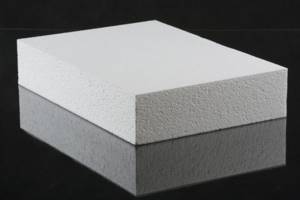
Available in the form of slabs and substrates. Found on the market as a decorative element. The standard size of the slabs is 600x1200 or 600x2400 mm. Standard sizes are established by GOSTs, but many companies change the sizes, making plates of different widths. The common size is 580 mm. The thickness of the elements varies from 20 mm to 10 cm, depending on the manufacturer.
The material is delivered to retail outlets in packages of several elements. The number of units in one package depends on the thickness of the products. For example, if the thickness of the slabs is 5 cm, the package usually contains 8 units of goods. With a thickness of 10 cm, 4 plates are packed.
Additional information: it is possible to produce expanded polystyrene as a floor covering. The modern market offers materials for laminate, parquet, and linoleum. It is possible to manufacture decorative elements based on the material. They look exactly like plaster.
Advantages and disadvantages
Like any other material, extruded polystyrene foam has advantages and some disadvantages. It is worth familiarizing yourself with them before purchasing and using them.
Advantages of extruded polystyrene foam:
- Moisture absorption within 0.2%. This indicator means almost complete waterproofness.
- Minimum thermal conductivity. At a standard temperature of 25°C it is about 0.032 W/m*K. If we compare the heat conductivity, the indicators are as follows: 55 cm of brick equals 3 cm of polystyrene foam.
- Withstands deformation well. Can be used for laying under a blind area, or after the foundation.
- Does not react with inorganic chemical reagents.
- Withstands significant temperature changes, the indicators do not change at air temperatures from -50 to +75°C.
- According to the documentation, the material can be used for at least half a century. During this time, the characteristics will not change.
- Environmentally friendly substance. It is used not only as insulation, but, for example, for the production of lightweight disposable plates or other types of cheap tableware. Children's toys are made from it.
- Has minimal weight. A small thickness is enough for good insulation.
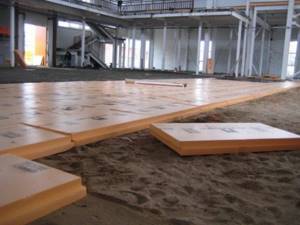
In addition to numerous positive characteristics, some disadvantages can be identified:
- comparison with other types of insulation shows that the price of the material is high;
- highly flammable. During the combustion process, harmful substances and black smoke are released;
- destroyed under the influence of infrared rays. To maintain performance characteristics, it must be hidden from direct sunlight;
- Manufacturers assure that rodents will not grow inside the insulation. Indeed, they do not live inside, but often make channels for movement;
- solvents destroy the structure.
In addition to the listed disadvantages, low vapor permeability can be added to them. Sometimes this is a plus, but if you insulate a wooden house, fungi and mold may develop. As a result, an unpleasant odor appears in the home and dampness is constantly felt.
Application area
Extruded gray polystyrene foam has a wide range of applications. Mainly used for insulation work. The scope of use is limited only by temperature indicators (not higher than 75°C). The material can be laid in damp places, in the ground.
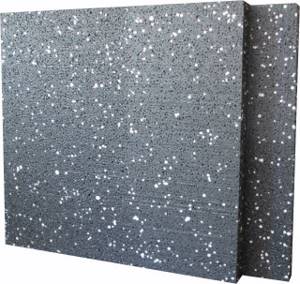
Typically, the scope of use is limited only by financial capabilities. The high cost makes it impractical for use in many places. In places where there is no need for high technical characteristics, ordinary polystyrene foam is used instead of PPS, reviews of which are also positive, in order to save money.
Used for insulation:
- concrete or wooden floors;
- walls indoors or outside the building. Compatible with any material;
- wells. Often concrete rings are coated with material for additional protection;
- blind areas;
- surface of the earth. To prevent destruction of the structure, paint is applied. Even a thin layer will not allow the composition to deteriorate.
In addition to the listed areas, the material is used in road construction. Included in many refrigeration units as extruded insulation. Used in agriculture. Roofs and underground floors are insulated with expanded polystyrene. One of the promising areas is the production of sandwich panels.
Technical characteristics of extruded polystyrene foam
The material has some of the highest technical characteristics on the market of insulation products. Any gas has a much lower thermal conductivity than solids. For air, the figure is 0.026 W/m*oC. Extruded polystyrene foam is an air mixture of approximately 90%. It has a thermal conductivity of 0.03 W/m*oC. Almost like air, which means heat is retained perfectly.
The material is produced with different densities. Manufacturers offer from 25 to 47 kg/m3. The higher the number, the greater the strength. As the density increases, the strength increases from 20,000 to 50,000 kg/m2.
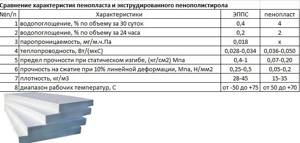
Water is poorly absorbed by polystyrene foam. In about a month, one tile can absorb about 0.4% of its own volume if it is completely immersed in water. Further, the percentage of absorbed liquid does not increase, but stops. Vapor permeability is minimal. It is 0.0128 Mg/(m*h*Pa). Often companies specializing in repair work suggest not using vapor barriers, limiting themselves to using only polystyrene.
The insulation is able to withstand temperatures ranging from -50 to +75°C. Its use is possible in almost any climate. The flammability is high, the class varies depending on the addition of additional substances, from G1 to G4.
Some models have a special recess along the edges. Made to increase the tightness of the slabs by insulating the seams. This innovation prevents cold layers from forming between the elements, ensuring complete heat retention.
Tests were carried out with polystyrene foam. Their meaning is repeated freezing and thawing of wet tiles. It was determined experimentally that the material can withstand 80 cycles without changing the technical characteristics. This information is useful for users: the composition can withstand approximately this number of years during operation.
Additional information: compared to polystyrene foam, polystyrene foam is approximately 2 times superior in heat retention. Increased strength, reduced thickness. Compared to other insulation materials, sound permeability is not very high. The disadvantage is compensated by ease of installation. Completely safe for health.
Material selection rules
The demand for expanded polystyrene is high and increases every year. In order for the insulation to last as long as possible and perform all the required functions without failures, you need to make the right purchase. Every manufacturer claims that their product is the best on the market, but this is not always true.
Selection rules:
- Polystyrene is designated by two numbers. If the marking is below index 28, you should refuse to purchase. Checking is mandatory; some brands of products are not suitable for façade work and will not cope with the insulation of a house. Choose material with an index of 40 and above. The PSB-S-40 brand, a self-extinguishing composition, has proven itself well.
- Before purchasing, look at the standards on which production was carried out. Many manufacturers produce slabs not according to GOSTs, but to their own specifications. Possible poor quality product. Usually the density is reduced, thereby reducing the cost. You should not rely on the brand number; be sure to familiarize yourself with the characteristics.
- To ensure the high quality of the product, you can break off a small piece from the edge. If small balls are visible at the fracture site, the polystyrene foam is probably low-grade. There should be polyhedra of the correct shape at the fracture. The broken piece is straight. The test shows the production method: extrusion performed on professional equipment, or a homemade method, like simple polystyrene foam.
- Purchase goods from reputable manufacturers. These are “Penoplex” URSA, Knauf and “Technonikol” - Russian. "Basf" or "Novachemicals" are foreign.
Do not forget that the production of polystyrene foam is a complex technological process. Production methods differ among many manufacturers. Some are safe, others can harm human health.
Manufacturer brands
Each brand of polystyrene foam manufacturer differs from competitors in some features. To understand the variety of choices offered, it is worth considering the products of each manufacturer in more detail.
Knauf
Manufacturer from Germany. Production is represented by numerous variants of polystyrene foam.

Insulation materials used:
- Knauf Therm Compack. Universal, used for any type of household thermal insulation. It has a low thermal conductivity coefficient of 0.032 W/μ, high sound insulation properties. The airborne noise reduction index is 47 dB, impact noise is damped if the indicator does not exceed 24 dB. Due to its performance, it is well suited for insulating small rooms.
Might be interesting
Thermal insulation
What are thermal insulation materials: comparative…
Thermal insulation
How to insulate a roof from the inside and not make mistakes?
Thermal insulation
Roofing and drainage: heating rules
Thermal insulation
Insulated Swedish stove: pros and cons
Supplied in slabs 1 x 0.6 m long. Thickness 5 cm. Vapor permeability 0.033 mg/mhPa
- Knauf Therm Roof Light. The density is low, 10–15 kg/m³. used to retain heat on the rafter frames of houses. Characteristics: heat conductivity 0.034 W/μ, steam conductivity – 0.035 W/μ.
- Knauf Therm Wall - for wall insulation. The indicators are the same as previous designs, with increased mechanical strength. 60 kPa is an indicator of compressive strength. The choice of slab sizes is wide. Thermal conductivity: 0.033 W/mk, vapor conductivity: 0.032 mg/mhPa. G3 – flammability class.
There are models Knauf Therm Flor, suitable for floor insulation, with a low thermal conductivity of 0.03 W/μ and Knauf Therm 5 in 1. The latter stands out for its maximum strength among all the company’s models. Withstands up to 17 t/m2.
URSA
The Russian polystyrene foam manufacturer URSA presents several product options.

| Model/Specifications | URSA XPS N-III | URSA XPS N-III-G4 | URSA XPS NV |
| Thermal conductivity | 0.032 W/mK | 0.032 W/mK | 0.033 W/mK |
| Application temperature | from -50 to +75 | from -50 to +75 | from -50 to +75 |
| Water absorption | 0.3% of volume in 24 hours | 0.3% of volume in 24 hours | 0.3% of volume in 24 hours |
| Vapor permeability coefficient | 0.004 mg/mhPa | 0.004 mg/mhPa | 0.004 mg/mhPa |
| Compressive strength | 25 t/m² | 25 t/m² | 50 t/m² |
The products differ from other manufacturers in their increased strength. The material is indispensable for professional construction. One of the most durable options that can withstand significant loads.
Penoplex
Domestic manufacturer of expanded polystyrene. Has a wide range of models. Plates can be used for various insulation options.

The following types of products are distinguished:
- Penoplex Wall
| Characteristics | Meaning |
| Thermal conductivity | 0.03 W/(m×°K) |
| Density | 25.0-32.0 kg/m³ |
| Compressive strength | 0.20 MPa |
| Water absorption | 0,5% |
| Fire resistance | G3 |
| Temperature range | -50 … +75 °С |
- Penoplex Foundation
| Characteristics | Meaning |
| Thermal conductivity | 0.03 W/(m×°K) |
| Density | 29.0-33.0 kg/m³ |
| Compressive strength | 0.27 MPa |
| Water absorption | 0,5% |
| Fire resistance | G4 |
| Temperature range | -50 … +75 °С |
- Penoplex Roofing
| Characteristics | Meaning |
| Thermal conductivity | 0.03 W/(m×°K) |
| Density | 28.0-33.0 kg/m³ |
| Compressive strength | 0.25 MPa |
| Water absorption | 0,5% |
| Fire resistance | G3 |
| Temperature range | -50 … +75 °С |
- Penoplex Comfort
| Characteristics | Meaning |
| Thermal conductivity | 0.03 W/(m×°K) |
| Density | 25.0-35.0 kg/m³ |
| Compressive strength | 0.20 MPa |
| Water absorption | 0,5% |
| Fire resistance | G4 |
| Temperature range | -50 … +75 °С |
- Penoplex 45
| Characteristics | Meaning |
| Thermal conductivity | 0.03 W/(m×°K) |
| Density | 35.0-47.0 kg/m³ |
| Compressive strength | 0.5 MPa |
| Water absorption | 0,4% |
| Fire resistance | G4 |
| Temperature range | -50 … +75 °С |
TechnoNIKOL
Considered a leader in the field of insulating materials. Every year the volume of production increased rapidly. Now insulation products are a little more expensive than competitors on the Russian market, but the quality of the product is the highest. Specializes in the production of numerous types of various insulation materials. Expanded polystyrene is available in several models.
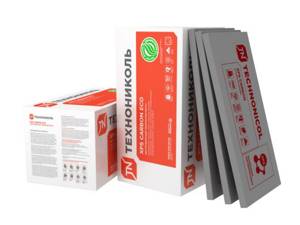
| Specifications/Model | Technoplex | Carbon Eco | XPS 35-300 | Prof | |
| Thermal conductivity | 0.032 W/μ | 0.029 W/μ | 0.028 W/μ | 0.028 W/μ | |
| Density | from 26 to 35 kg/m³ | 26-32 kg/m³ | 35 kg/m³ | 30 kg/m³ | |
| Compressive strength | 200 kPa | 250 kPa | 400 Kpa | 300 kPa | |
| Water absorption | 0.2% | 0.2% | 0.2% | 0.2% | |
| Fire resistance | G4 | G4 | G4 | G4 | |
| Temperature range | -50 … +75 °С | -50 … +75 °С | -50 … +75 °С | -50 … +75 °С | |
| Vapor permeability | 0.01 mg/mhPa | 0.011 mg/mhPa | 0.01 mg/mhPa | 0.01 mg/mhPa | |
FAQ
– What is better for a screed, expanded clay or expanded polystyrene?
The thermal conductivity coefficient of expanded clay is on average 0.12, and that of penoplex is 0.03 W/m*C. Those. almost an order of magnitude. Thus, to ensure the required thermal insulation of floors, the backfill of cermatite will be much thicker than laying sheets of Penoplex and the like. And as a result, the entire structure of floors with expanded clay will be much thicker than the structure of floors with penoplex.
– Polyurethane foam or polystyrene foam, which is better?
Having carried out a comparative analysis of both insulation materials, we can say the following: polyurethane foam has higher characteristics in terms of noise insulation, moisture resistance, and heat resistance. Has a higher fire safety class. However, its thermal conductivity is an order of magnitude lower.
Considering that we are talking about choosing a material for insulation, polystyrene foam will be the best. Although, given the experience of users, there is no need to use a material with such high performance as polystyrene. Therefore, preference when purchasing should be given to polyurethane foam.
– Is polystyrene foam harmful to human health?
No, the material is completely safe to use. The only problem is that when burning, acrid smoke is released.
– What surfaces cannot be insulated with polystyrene foam?
You cannot insulate surfaces whose temperature exceeds the specified limits: -50 ... +75 °C. Another limitation: in wooden houses where good vapor barrier is required, it is not advisable to use the material. Mold and mildew may form between the wall and the insulation. No humid air will escape from the house. There will be constant high humidity in the room.
What is extruded polystyrene foam? Universal insulation. It is considered one of the modern examples of materials of this class. When using it, you must comply with the established temperature standards and other important requirements.
If EPS insulation is done correctly, manufacturers provide a guarantee for the service life of polystyrene for at least 50 years.
Insulation of foundations
The use of extruded polystyrene foam for foundation insulation can significantly reduce the cost of materials for the construction of massive foundations. Plates of this material are laid at the bottom of the trenches, then the structure is filled with concrete. This method protects against the spread of moisture and cold masses into the concrete structure. In areas with abnormally low temperatures (the Far North), expanded polystyrene slabs are used to cover the outside of the foundation. This protects the structure from freezing and reduces energy costs for heating the room as a whole.
Thus, it is obvious that the scope of application of extruded polystyrene foam as a heat insulator is very large. Also, installation of slabs made from this material is quick and simple, and the cost of finishing a building using this method competes with the cost of work using other types of insulation of the surfaces of buildings and structures.
EPS and XPS polystyrene

EPS - expanded polystyrene boards - are formed by pre-pelletizing the granules and then “gluing” them into a block form, which is then cut into boards of the required sizes. The structure of the surfaces cut in this way is quite porous, which mainly affects the increase in absorption in the case of prolonged contact with water.
XPS - extruded polystyrene boards - are manufactured in molds with target plate sizes onto which granules are pressed and undergo foaming. Therefore, these plates have a more uniform closed cellular structure with smooth surfaces. This reduces their susceptibility to soaking with water even after prolonged immersion.
Extruded polystyrene - preferably from available insulation materials - works as insulation for foundation and basement walls, ground floors, and decks.
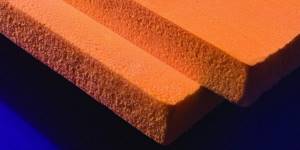
XPS boards are characterized by much greater hardness and mechanical strength than EPS boards. It is easy to distinguish them from ordinary polystyrene foam because the boards are painted. Additionally, the most common plate size is:
- from expanded polystyrene (EPS) – 500-1000 mm;
- from extruded polystyrene (XPS) – 600-1250 mm.
Thermal insulation – thermal conductivity coefficient:
- EPS EPS – = 0.030-0.042 W / (m • K);
- Expanded polystyrene XPS – 0.028-0.035 W / (m • K).
Soundproofing:
EPS and XPS are poor. An exception is flexible polystyrene boards used for acoustic insulation of floors (in so-called floating floors).
Fire resistance:
EPS and XPS are self-extinguishing materials; in the flames they melt and on a fire, they do not support the fire; after subtracting its source, they come out.
Options and applications
EPS polystyrene is available in several varieties. Most Popular:
- simple - white plates;
- graphite – silver, gray or black plates with a reduced coefficient;
- with reduced water absorption - mostly blue.
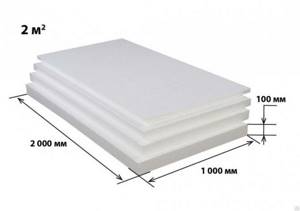
Currently, manufacturers mainly use the heat transfer coefficient of this material on packaging - W / (m • K) - the lower it is, the better the thermal insulation. They also define a typical application:
- façade curing;
- roof/floor – flat roofs, floors on the ground;
- roof/floor/parking area – especially busy floors on the ground, such as in garages where truck traffic is expected;
- foundation - the basics, these are varieties with reduced absorbability; – acoustic – construction of floating floors.
Extruded polystyrene XPS, despite differences between individual products, always has very low absorbency and high mechanical strength. Therefore, it can be replaced with polystyrene foam in:
- floors;
- funds;
- inverted and green roofs.
The first classification, relating the compressive strength of expanded polystyrene foam to a specific application, no longer applies. He recommended, for example, polystyrene EPS 70 for double-layer walls, EPS 100 for floors. And while many people are used to it, there is no easy translation between the old and new standards.
Therefore, some manufacturers place an additional label on their products with the designation CS (10).
It is worth adding that the density of polystyrene foam in itself does not determine its thermal insulation. Higher density results in increased compressive strength. When weighing polystyrene foam produced by some manufacturers, it should be considered as a check to see if the information provided on the label is reliable - if this parameter is not true, others may be similar.
PENOPLEX
The company, operating in St. Petersburg since 1998, chose for the name of its trademark the name of the type of thermal insulation in which it specializes. Over more than two decades of operation, the company has eight production sites, and 51% of extruded polystyrene foam sold to Russian builders is called Penoplex.
There are two large groups of products in the product catalog:
- professionals;
- for a house or apartment.
They produce about 10 types of heat-insulating boards of different thicknesses, densities, and purposes. There are explanatory and training materials, and packages of design solutions have been prepared. At the customer’s request, specialists will conduct an in-person or correspondence seminar on the entire product line.
Main rules for choosing a manufacturer
Recommendations regarding which company should be trusted vary greatly, and it is almost impossible to agree on a single compromise opinion. The way out of the situation is simple - through trial and error, through personal experience, you will be convinced of the quality of the product of the manufacturer you have chosen. In most cases, you should trust those companies that offer a truly wide range, from sizes to color options.
Well, the most important argument in favor of the manufacturer is the presence of certificates of quality and environmental friendliness of the products of the appropriate type. In this case, you are guaranteed to receive reliable and durable insulation, and its effectiveness will not be in doubt.
Trust in well-known manufacturers, combined with a reasonable amount of caution and accuracy, will give the expected result - buying expanded polystyrene and polystyrene foam will be the best solution for insulating any room. To finally decide whose products to choose, you should pay attention to the purely practical side of the issue. The conversation is about the range of products, their sizes, thickness and cost. If all the parameters suit you, don’t waste your time and buy the best thermal insulation material on the market!
Timlax (Karpov Chemical Plant)
The Karpov Chemical Plant was opened back in 1868 and is one of the largest and oldest enterprises in the country with a powerful experimental base. Today in Mendeleevsk (Tatarstan) there are about 11 large workshops for the production of chemical products for various purposes, one of them specializes in the production of extruded polystyrene foam under the TIMPLEX trademark.
TIMPLEX thermal insulation is a rigid thermoplastic plate with a cellular structure, with a strength of 0.3 MPa, a thickness of 20 to 60 mm and a standard size of 600x1200 mm. Currently, they are widely used for thermal insulation of industrial and residential buildings, and road surfaces.
The operational and quality characteristics of TIMPLEX fully comply with international standards and at the same time are affordable.
High competition with foreign manufacturers, constantly tightening consumer requirements for product quality, as well as periodic economic shocks in the domestic market stimulate domestic manufacturers. There are three main factors in favor of choosing Russian thermal insulation materials made from expanded polystyrene foam: quality that is not inferior to foreign competitors, as well as geographic and price accessibility.


